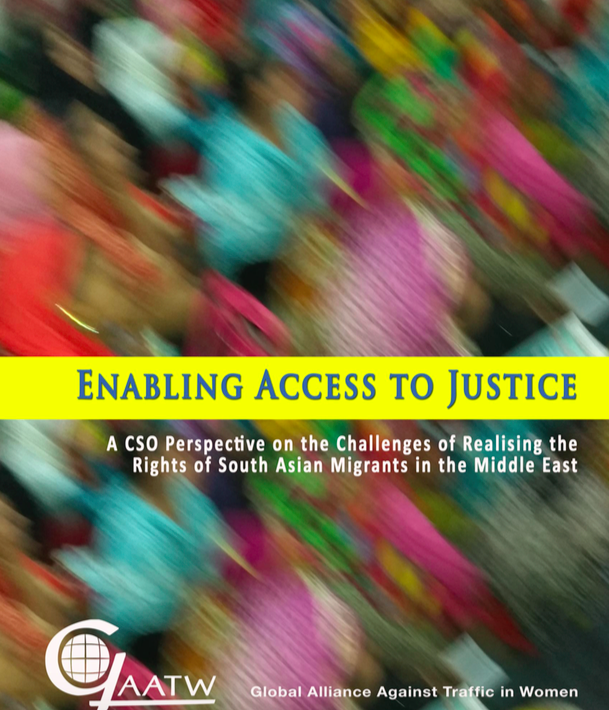
Enabling Access to Justice: A CSO Perspective on the Challenges of Realizing the Rights of South Asian Migrants in the Middle East
EXCERPT FROM EXECUTIVE SUMMARY:
“In 2015-2016, the Global Alliance Against Traffic in Women’s (GAATW) International Secretariat undertook a project called the ‘South Asia – Middle East Access to Justice Project’ (SAME A2J Project) as part of a larger initiative, ‘Addressing Labour Trafficking of South Asian Migrant Workers in the Middle East.’ The objective of the SAME A2J Project was to identify cases in which migrant workers who had travelled to the Middle East as temporary labour migrants were trafficked, and to identify the barriers those workers faced accessing justice. The rationale for the project was a perception within GAATW that migrant workers from South Asia who were coerced, defrauded or deceived into situations of severe exploitation were rarely treated as trafficked persons and rarely received an adequate remedy. A total of thirteen partner organizations from seven countries (Bangladesh, India, Jordan, Lebanon, Kuwait, Nepal and Sri Lanka) participated in the project. All offer support to migrant workers and their families. They attended workshops to discuss the dynamics of trafficking in the context of labour migration, to share case examples, and to discuss barriers to justice. They continued to provide ongoing input and reflections on access to justice through email correspondence and in-person meetings with GAATW-IS staff. This report aims to capture one area of learning that emerged from the project: the barriers that project partners experience or observe when supporting migrant workers to access justice. Although specific barriers to justice may differ between countries, and even regions within countries, project partners identified many in common.”
